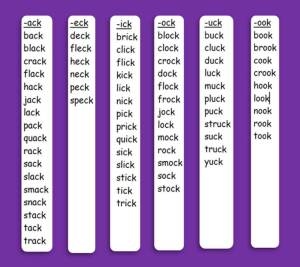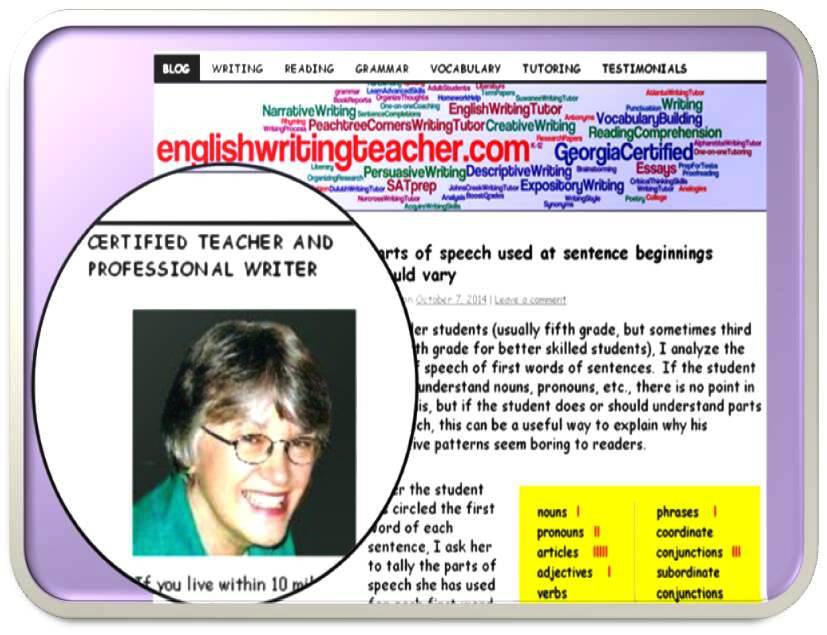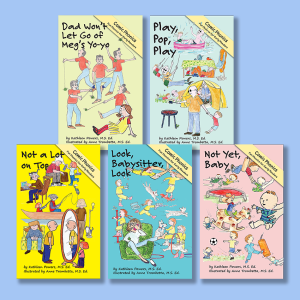Why Johnny Can’t Read is a book by Rudolph Flesch, Ph. D., a readability expert in the US from the 1950s until his death in the 1980’s. This book advocated a phonics-based approach to learning to read when most American children were learning the “look-see” approach of memorizing the look of a word. Today Flesch’s approach is out of favor if used alone, but if it is used in combination with some other approaches, it can be part of a good approach to teaching reading.
However, kids hate it.
Flesch’s approach is to break down phonics into sounds which correspond with letters, and to teach lists of the same sound. One of the beginning lessons is a list of several columns of short a CVC words; it is followed by a page each of the other short vowel sounds. Then the short vowels are mixed together, two vowel sounds at a time. Gradually all the sounds of English are introduced through lists of words which use those sounds.
The problem is that reading lists is boring for children. They find it hard to stay focused for more than a few minutes on such a task, so if that is the only strategy, kids resist these lessons.
Other reading programs have taken Flesch’s idea and have presented the lists a different way. One of the most successful is Explode the Code. For a lesson on bl, cl, fl and gl bends, for example, there are nine pages of activities. On one page the word to be learned is to the left, and to the right are three pictures, one of which illustrates the word. The child needs to circle the correct picture. On the next page the student sees a word on the left and needs to circle the same word (one of three) on the right. On another page the student fills in the blank with a word which is illustrated to the left. On another page the student answers a question using one of the blend words. Students prefer the variety that this approach takes.
When I teach reading to beginners, I use a combination of Flesch’s ideas and others. I don’t use his long list of words, but sometimes I give my students one column of his lists. For variety, I put words on index cards which the child can hold and shuffle, so the child has more control. Again, I limit the number.
I taught my three children how to read using the lists at the back of Why Johnny Can’t Read, so I will always be grateful to Flesch, his research, and his simple, straight-forward approach to teaching phonics. As a writer, I am grateful for his guides on how to write plain English.







I also used this book to teach my three children and one grandchild how to read blending three letter words using the individual sounds for each letter, all before they started kindergarten. With this base I let the school take over the more complex lessens. They fought me at first but I kept lessons to 5 – 10 minutes.I also used foam letters to make words on the side of the bathtub and my granddaughter reads them in the bath until she loses interest and I stop. Once they became more confident they enjoyed doing it and as teens thanked me because the knowledge put them at an advantage all through school.
LikeLike
Marie, I too used Why Johnny Can’t Read with my kids years ago. They hated it–reading long lists of words is tedious. But they learned to read with a good phonics base. Like you, I figured out ways to augment the lists–creating BINGO games using reading words, writing silly sentences that could be answered with a yes or no using the words, and writing tiny stories using reading words. I suspect Why Johnny Can’t Read is not used in schools but the theory behind it–a phonics-based approach–is used, at least in some schools. The Wilson reading system uses this approach as does the Explode the Code series, and Kumon and Eye Level tutoring centers. Sounds like your children have a smart mother, and now your granddaughter has is benefiting as well. Thanks for writing. –Mrs. K
LikeLike